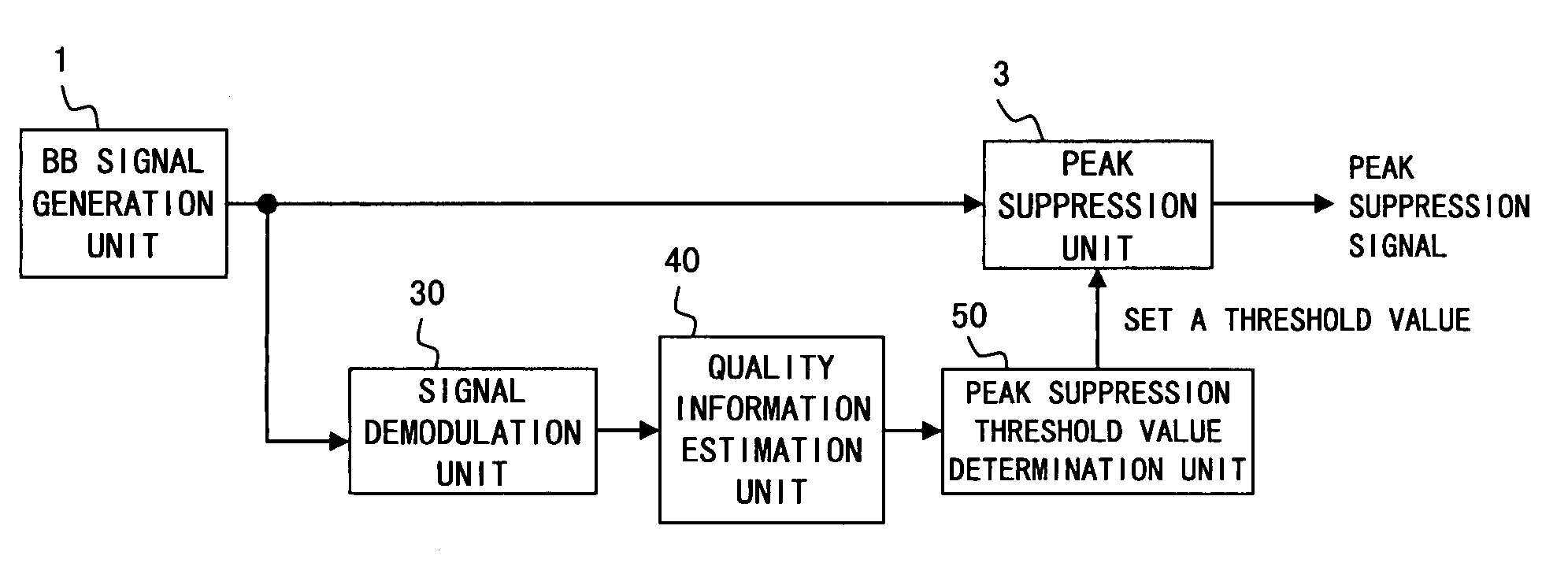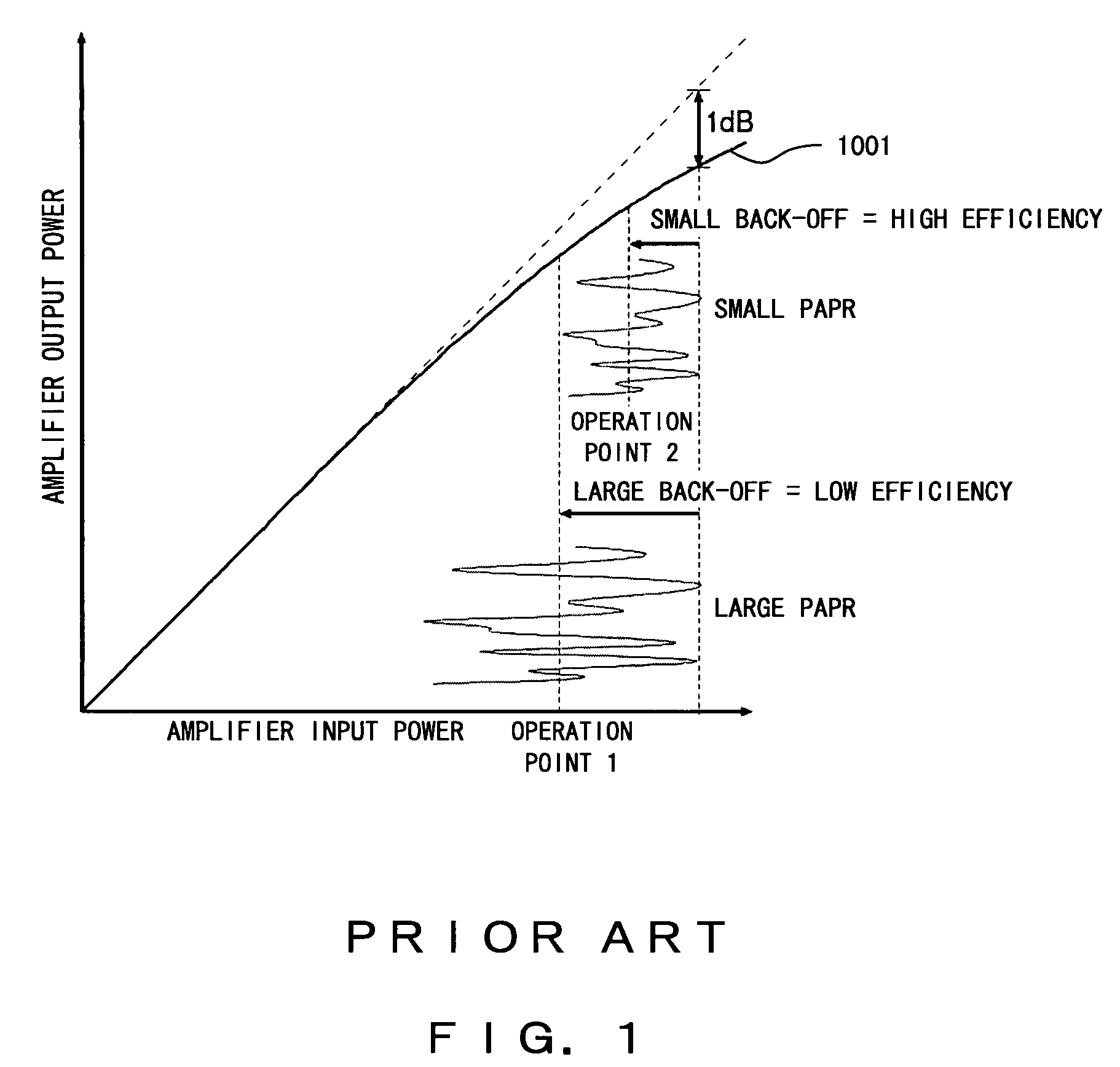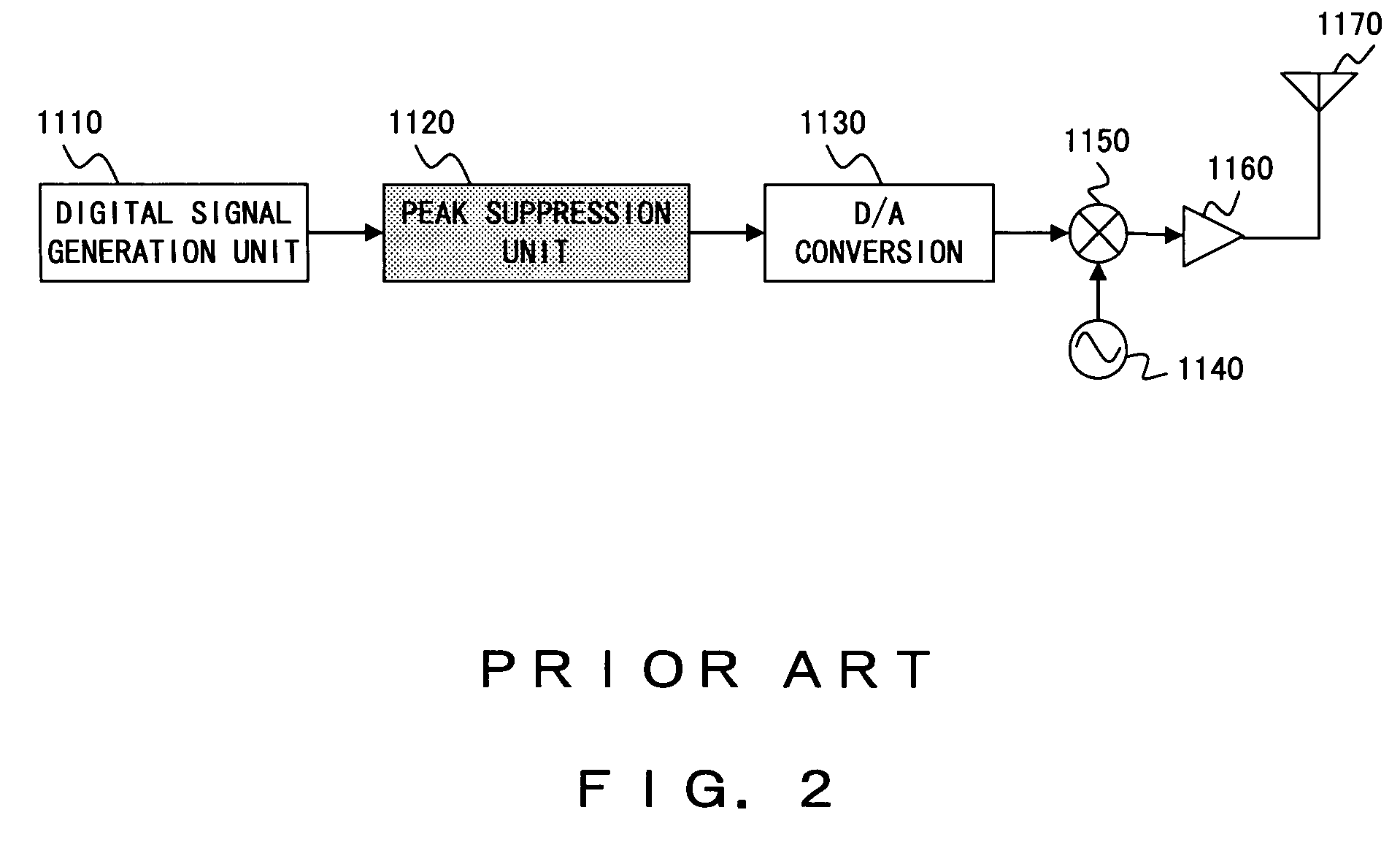Peak suppression control apparatus
a control apparatus and amplifier technology, applied in the field of transmission amplifiers, can solve the problems of reducing the cutoff signal, limiting the degradation of the reception characteristic, and degrading the spectrum characteristic in a large degree, and achieve the effect of reducing the papr of the signal and high efficiency
- Summary
- Abstract
- Description
- Claims
- Application Information
AI Technical Summary
Benefits of technology
Problems solved by technology
Method used
Image
Examples
first embodiment
[0084]The present embodiment is configured to change a degree of peak suppression of a transmission signal by obtaining quality requirement information from a baseband signal generation unit.
[0085]FIG. 8 is a block diagram showing a configuration of the first embodiment of the present invention.
[0086]The first embodiment comprises a baseband signal generation unit (i.e., BB signal generation unit) 1, a peak suppression threshold value control unit 2 and a peak suppression unit 3. The baseband signal generation unit 1 converts a voice signal at the time of a telephone call (noted as “call” hereinafter) and various data into a baseband signal suitable to a radio transmission, and output their converted signal to the peak suppression unit 3. When outputting a baseband signal to the peak suppression unit 3, the baseband signal generation unit 1 outputs information (a modulation method and a coding ratio) related to the baseband signal to the peak suppression threshold value control unit...
second embodiment
[0091]The first embodiment is configured to obtain the quality information of a signal from the baseband signal generation unit 1 as described above. The second estimates a signal quality based on a baseband signal generated by the baseband signal generation unit, and determines a degree of peak suppression based on the signal quality.
[0092]FIG. 10 is a block diagram showing a configuration of the second embodiment of the present invention. The same component sign is assigned to the same constituent component as that of the first embodiment of FIG. 8 in the showing of FIG. 10.
[0093]The second embodiment comprises a baseband signal generation unit 1, a peak suppression unit 3, a signal demodulation unit 30, a quality information estimation unit 40 and a peak suppression threshold value determination unit 50.
[0094]The signal demodulation unit 30 converts a baseband signal input from the baseband signal generation unit 1 into a signal allowing an extraction of the quality information (...
third embodiment
[0130]The third embodiment is configured to estimate a signal quality based on a baseband signal output from a baseband signal generation unit 1 and on a signal of a result of applying a peak suppression process to a baseband signal output from a peak suppression unit 3, and set a threshold value (i.e., a peak suppression threshold value) to be output to the peak suppression unit 3 based on the estimated signal quality. The signal quality uses, for example, BER (Bit Error Rate), EVM (Error Vector Magnitude) and “an attenuation of a signal power due to peak suppression” (abbreviated as “signal power attenuation” hereinafter).
[0131]Different from the case of quality information being directly known, such as a modulation method, when estimating a signal quality degraded by the peak suppression unit 3, it is necessary to estimate a signal quality by carrying out peak suppression once at the peak suppression unit 3 and repeat the process of setting a threshold value based on the estimati...
PUM
 Login to View More
Login to View More Abstract
Description
Claims
Application Information
 Login to View More
Login to View More - R&D
- Intellectual Property
- Life Sciences
- Materials
- Tech Scout
- Unparalleled Data Quality
- Higher Quality Content
- 60% Fewer Hallucinations
Browse by: Latest US Patents, China's latest patents, Technical Efficacy Thesaurus, Application Domain, Technology Topic, Popular Technical Reports.
© 2025 PatSnap. All rights reserved.Legal|Privacy policy|Modern Slavery Act Transparency Statement|Sitemap|About US| Contact US: help@patsnap.com



